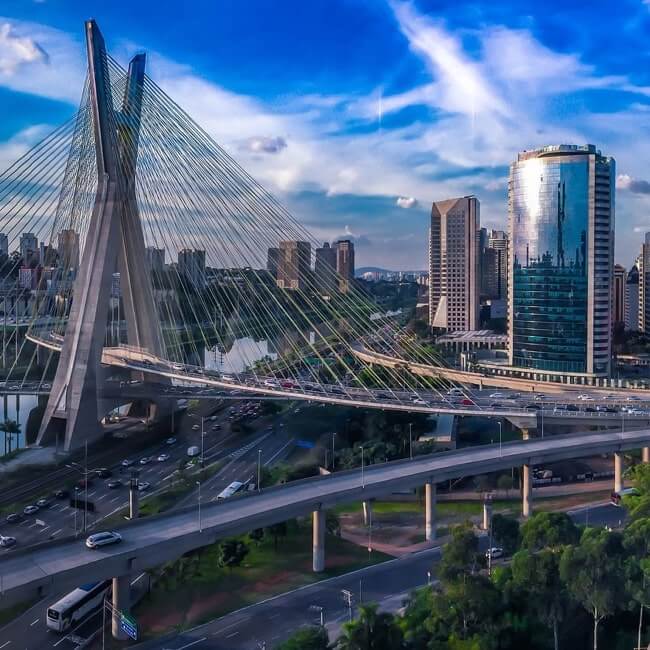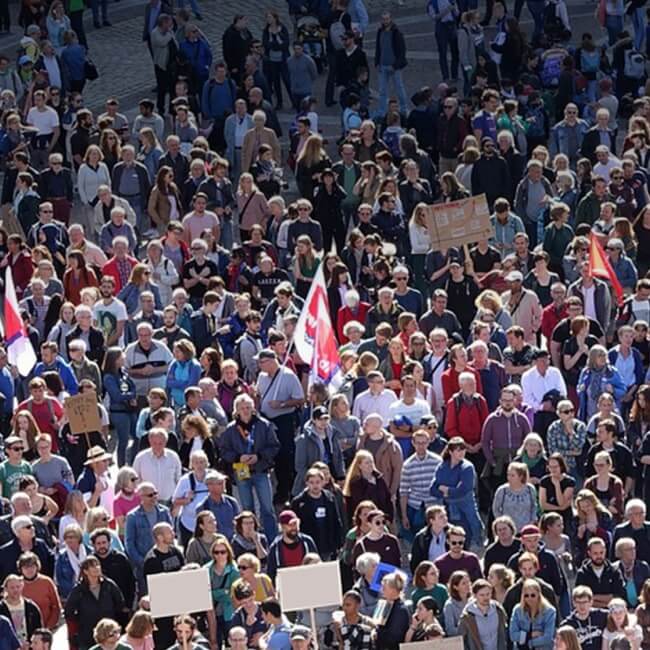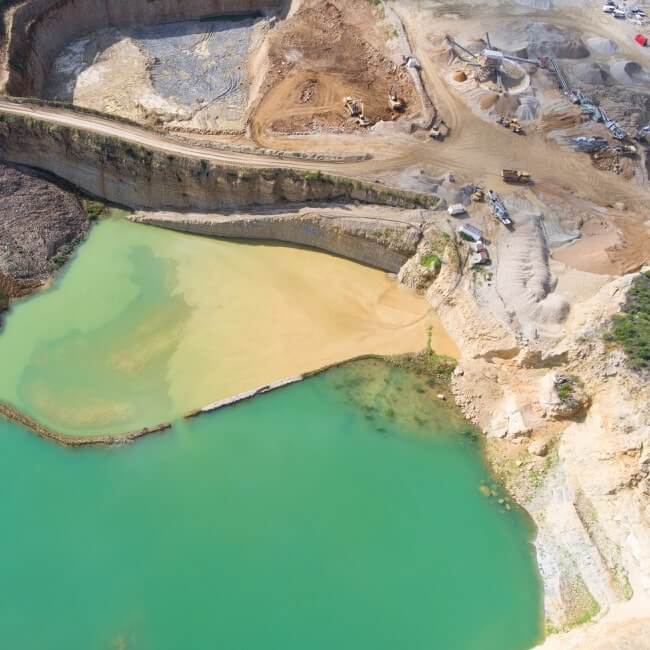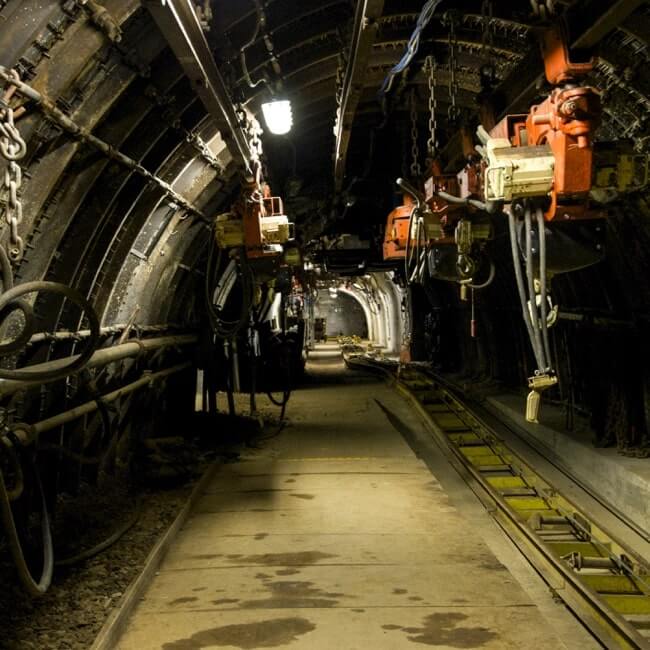Mexico's Tehuantepec isthmus rail corridor: Much more than a Pacific-Atlantic link

The Mexican government plans to turn the Tehuantepec isthmus rail corridor into something more than just a link between the Atlantic and Pacific oceans. It seeks to boost the region’s economy with the construction of 10 industrial parks on the isthmus, among other projects.
Besides the rehabilitation of a 300km rail line and the expansion of two ports – Salina Cruz in Oaxaca and Coatzacoalcos in Veracruz – the program involves highways, pipelines and telecommunications infrastructure.
The ambitious plan, one of President Andrés Manuel López Obrador’s (AMLO) priority projects, will also strive to attract those Mexican companies that use the Panama Canal, Héctor Ramírez Reyes, director of the agency in charge of the Tehuantepec isthmus program, told BNamericas.
Ramírez says the corridor will transport passengers and freight across the isthmus in an estimated three hours, while rehabilitation works on the rail line began recently.
BNamericas: We know the project consists of the construction of a 300km rail line for an electric train that will connect the Coatzacoalcos and Salina Cruz ports and the expansion of the ports. But, what else does the Tehuantepec isthmus rail corridor program consist of?
Ramírez: The development program seeks to strengthen the regional economic roots to improve the wellbeing of the local population. It has, of course, an economic aspect. An important economic aspect for strengthening infrastructure and productive activity in all regional sectors. It has a very important social aspect, to alleviate the special situation of the regions that have been living in extreme poverty, which are mainly the peasant areas. It also has a very important environmental aspect, it's a delicate and very environmentally damaged area. So, the idea is to promote projects that seek to strengthen natural capital, in the broadest sense, natural resources, and ecosystem biodiversity.
It has a very important project, which we call the backbone of the program, which is the integration of the logistics platform of the interoceanic corridor. And what we're looking for here is to link three companies that worked separately – [the two ports and the railway] – and that want to be linked in a single company or in a single business orientation.
The restructuring of the world economy now means that a lot of production takes place in Asia and is consumed in developed countries. So, taking advantage of this situation, what we want to do is to use an interoceanic corridor, which is of strategic importance for the country, the world and Latin America and currently, only Panama has one. This step would allow the transportation of merchandise from one side to another.
BNamericas: AMLO decided to create a separate and independent agency to develop the corridor program. Why?
Ramírez: [The isthmus corridor] is one of the strategic projects of this administration and the president. So AMLO gives a personal and now weekly follow-up on the project, and the most comfortable organism was a type of agency that can only be achieved through a decentralized public body [OPD].
BNamericas: According to the government's plans, the first stage of the program involves the construction of the rail line, the second entails the port expansions and the third stage will incorporate the local communities of Oaxaca and Veracruz into the project. What other infrastructure-related factors does the project include?
Ramírez: Perhaps the second major project is the integration of 10 development poles throughout the entire isthmus. The idea is that those 10 development poles are, in terms of land, acquired by the government or covered by the government ... [and then] a special tax regime will be established so they can be tendered and turned into industrial parks ... It will be some kind of association that will allow a private developer to put all the infrastructure and even be in charge of the administration of these development poles.

BNamericas: Development poles? The Maya train project also contemplates the construction of 'development poles', but the national tourism board Fonatur defines them as train stations with characteristics that will trigger economic development. How do the isthmus developers define the term development poles?
Ramírez: Here, a development pole is the way in which we try to boost the productive activity that is paralyzed, especially in the interior of the Tehuantepec isthmus. In the northern part, the entire enclave is linked to the oil and gas industry. In Salina Cruz, there is nothing but the refinery, it was not able to grow as Coatzacoalcos [in Veracruz state] did, but half of the isthmus is practically dead in productive activity. The industrial sector is a little diversified, very rudimentary and [more than 90%] are small- and medium-sized enterprises with very low productivity. So the idea is to attract private capital, to be able to establish clusters linked on one hand to agro-industrial activity ... livestock and agriculture, which are powerful in some of those regions. But nevertheless, there's no capacity for transformation and incorporation of added value. The idea is to make development poles linked to agro-industrial activity, to hydrocarbon activity – especially the southern part of Salina Cruz – and even to see the possibility of developing other clusters that have no previous background in the region such as the aeronautical industry in Querétaro and the automotive industry in Aguascalientes.
We call them development poles and avoid the term industrial parks because they have a developmental connotation of another nature. Productive chains for micro, small and medium enterprises in the region will be promoted.
BNamericas: In the first part of the 2020-24 national infrastructure plan, private sector resources were allocated for two projects: 4bn pesos [about US$200mn] for the expansion of the Coatzacoalcos-Salina Cruz highway and 2bn pesos for expansion and modernization works at the Salina Cruz and Coatzacoalcos ports. What other investments are contemplated or guaranteed?
Ramírez: Right now what is estimated and budgeted in the country's 2020 budget is 3bn pesos for the modernization of the road and reconditioning of the ports. That has been committed and even tendered ... The entire rail track will be replaced, all the stations are going to be modernized, the passenger service – a requirement that the population made of the president – is going to be restored because they miss it because there are many villages that were born alongside the railway throughout the entire isthmus. It's what they demanded the president do and the idea is to restore the passenger transport service, but the fundamental idea is to focus on freight transportation. Otherwise, we're just preparing the business plan. I cannot comment exactly on the expected investment levels because we're still working on the development plan and the strategic part for the development poles.
There is a pre-investment of 3bn pesos for the acquisition of land that's going to be carried out this year ... and in the next one too. But much of the substantive part is going to come from private investment that we'll attract to the region. So, there are various sources of financing.
BNamericas: So the train will be adapted to transport passengers too?
Ramírez: Yes, especially for populations that live across the isthmus. For a long time, and before the last century, the railroad had a lot of movement and ... it was the circulatory system of the local economy and it has been that way for more than 100 years.

BNamericas: What about highway projects?
There is a whole approach to develop a first-level road system, but also the entire feeder system of these large roads, and above all the development of municipal road access and many populations that are marginalized and of which there's no way to communicate there. This will be in charge of [the ministry of communications and transportation, SCT], all road and road development, of which this program is part of the broader development.
BNamericas: And who oversees the expansion of the ports? The decentralized organism of the isthmus?
Ramírez: In mid-2019, the president signed a decree to transfer the jurisdiction of the two ports, Salina Cruz and Coatzacoalcos, and the rail line [from SCT to the Tehuantepec isthmus rail corridor OPD]. They are already part of the agency's assets now.
First on the agenda is the integration of the corridor as a business unit, the linking of three companies that operated separately and that each one responded to their own business plans instead of a solid one, which we're already working on ... The works that are going to be developed are meant to adapt [the three companies] to this new business model at the interoceanic corridor and to complete storage units for vessels that do not exist as of now. The land is already in place and there is the probability that we award the service [to other companies] as industrial parks. Tenders will be launched in such a way that there are companies that can develop the infrastructure for the container transport service and that can even offer the transport service themselves. But those are things that are in the process of selection and the idea is to make that company able to offer a competitive service in time in cost and quality of service.
BNamericas: Where do you see a market for this business model?
Ramírez: We want to start pulling surplus cargo from Panama. We have information that in a short time Panama [Canal] will become saturated again despite the expansion works that they began in 2014 and, on the other hand, we have information that a large part of the clients of the canal are Mexican companies. [Ships have to travel 2,000 miles down] to Panama and back up to the east coast of the United States. There are conditions that allow us to be very optimistic about the possibilities of profitability and value generation that this region has and that has not yet been exploited. There's not a single previous government that has not had an isthmus development program in mind, but they never decided to develop it until now. It's the first formal attempt that has already started, it started last year with the first investments and will be reinforced this year and next year ... [In 2020, the agency] will be dedicated to infrastructure construction with the idea of starting to operate the interoceanic corridor in 1Q21.

BNamericas: What studies have been completed and which studies are missing?
Ramírez: Well, we started working on this project in 2016. The first diagnoses we made in the region, the first strategic planning works, we made even outside the government apparatus, before joining this office. After that, there are two fundamental studies. A study that is being done with Surbana Jurong, a Singapore company, to carry out the conceptual and strategic plans for the interoceanic corridor. The other study uses funds from the Latin American development bank CAF for all aspects regarding industrial development ... I think they are the fundamental studies.
BNamericas: The first set of tenders to rehabilitate the rail line was awarded to five companies on February 4. When will these works end and what bids are left to launch?
Ramírez: We expect works to begin and finish the railroad this year so that we can begin service in [2021], and that will coincide with the expansion of the ports. The [construction] outlook for this year will take place in the short term. We're going to change of track, modernize the train facilities and then continue the port expansions, which are already underway, both in Coatzacoalcos and Salina Cruz.
BNamericas: Will there be a public consultation?
Ramírez: There was already an indigenous consultation last year. It took place from March 30-31, which we are bound to do by international regulations. The consultation took us four months and took place in seven different regions, three sessions ... all filmed and recorded – even with an attendance list. After all that, we obtained the social license required to promote the project and rehabilitate the rail line.
There will now be another type of consultation for development poles. We're in the planning process for these consultations. There will be four consultations, not indigenous consultations but public consultations in relation to four development poles. They are in private landowners' areas. There is a good acceptance and I don't believe we have any problem. We'll carry out these consultations in the next month or so.
Subscribe to the leading business intelligence platform in Latin America with different tools for Providers, Contractors, Operators, Government, Legal, Financial and Insurance industries.
News in: Infrastructure (Mexico)

Pouring resources into water: A growing business in Latin America
BNamericas takes a look at recent initiatives in the region to improve water and sewerage provision, highlighting country-specific developments.

Brazil, Mexico, Argentina and beyond: Navigating infrastructure investment opportunities in Latin America
BNamericas talks with Rafael Marchi, managing director of Alvarez & Marsal Brazil.
Subscribe to Latin America’s most trusted business intelligence platform.
Other projects in: Infrastructure (Mexico)
Get critical information about thousands of Infrastructure projects in Latin America: what stages they're in, capex, related companies, contacts and more.
- Project: Line 4 Urban Articulated Transport Network (RUTA) - Metropolitan Route
- Current stage:

- Updated: 2 weeks ago
- Project: ASIPONA Ensenada - Container Terminal Expansion
- Current stage:

- Updated: 2 weeks ago
- Project: Bypass La Pitahaya – Eastern San Luis Potosí
- Current stage:

- Updated: 2 weeks ago
- Project: Morelia - Salamanca Highway
- Current stage:

- Updated: 2 weeks ago
- Project: New Extension of Line 1 - Guadalajara Light Rail
- Current stage:

- Updated: 3 weeks ago
- Project: Mexico - Pachuca Train (Felipe Ángeles International Airport (AIFA))
- Current stage:

- Updated: 3 weeks ago
- Project: Specialized Cruise Terminal in Mazatlán, Sinaloa
- Current stage:

- Updated: 3 weeks ago
- Project: Guadalajara bypass
- Current stage:

- Updated: 3 weeks ago
- Project: Tepic bypass
- Current stage:

- Updated: 3 weeks ago
- Project: Real del Monte Highway - Huasca Junction
- Current stage:

- Updated: 4 weeks ago
Other companies in: Infrastructure (Mexico)
Get critical information about thousands of Infrastructure companies in Latin America: their projects, contacts, shareholders, related news and more.
- Company: Wal-Mart de México, S.A.B. de C.V. (Walmart de México y Centroamérica)
- The description contained in this profile was taken directly from an official source and has not been edited or modified by BNamericas researchers, but may have been automatical...
- Company: Mobility ADO
- Company: Administradora de la Vía Corta Tijuana - Tecate (Admicarga)
- The description contained in this profile was taken directly from an official source and has not been edited or modified by BNamericas researchers, but may have been automatical...
- Company: Epccor S.A. de C.V. (EPCCOR)
- The description contained in this profile was taken directly from an official source and has not been edited or modified by BNamericas researchers, but may have been automatical...
- Company: Arquinteg, S.A de C.V. (Arquinteg)
- Company: Esp Oil and Gas Energy S.A de C.V (Esp Oil And Gas Energy)
- The description contained in this profile was taken directly from an official source and has not been edited or modified by BNamericas researchers, but may have been automatical...




